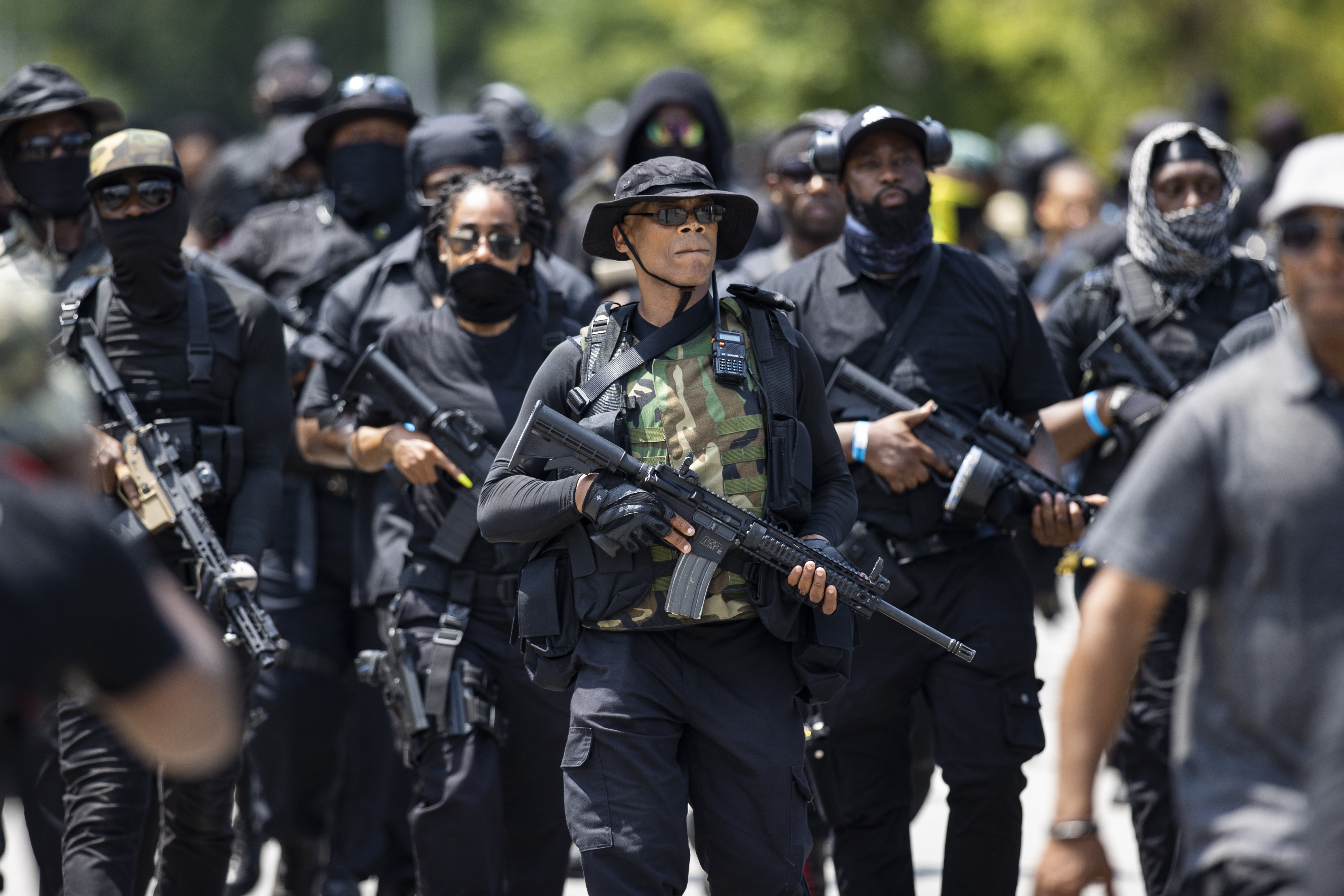
Here’s a bit I saved from Above The Law. I thought it was genuinely interrogative and that seems far too rare outside the “in” crowd of the firearm community. People who don’t know and genuinely want to understand ‘why’ certain things are the way they are. Such as why well educated gun owners resist so vehemently so many of the gun control proposals. Are we just “bitter clingers” or was there depth to our arguments?
This won’t be a normal fisking, this feels more genuinely intellectual in its questioning than your average anti-gunner who merely wants to hear their answer from your mouth. Something along the lines of, “Your right, angry person with no practical knowledge or experience in this field. Clearly we should turn in guns for the greater good!”
But the real first paragraph intrigued me. The second triggered me a little, but we’ll get to that.
Unspoken Thoughts About Gun Control
What do you think? And why are these issues generally overlooked?
An interesting series of questions, Mr. Herrmann. Let me endeavour to answer them.
I’m an equal-opportunity offender. Allow me to offend everyone, by offering a few thoughts (on both sides of the issue) on gun control:
Bold. Let’s see where we go from here. I promise to only be offended if it is truly well deserved.
First, shouldn’t we require the microstamping of all gun cartridges nationwide? We should require manufacturers to place a microscopic engraving on cartridge cases identifying the gun from which the cartridge case was expelled. I understand that folks want to possess guns, but I don’t understand why anyone should have the right to fire a gun anonymously. Police should be able to immediately trace a cartridge to a specific gun.
Does anyone disagree in good faith?
Yes, this one is easy.
Microstamping is straight science fiction. A totally non-viable technology. Steel, brass, and aluminum under momentary pressures varying from 24,000 to 80,000 PSI don’t work this way. Neither the firing pin nor the chamber can in any way reliably imprint a QR code or whatever else someone is thinking onto a spent case. This is basic materials sciences.
This utopian pipedream sits firmly in the realm of ‘wouldn’t it be nice if’ and it will remain there, probably until the end of conventional metallic cartridge ammunition. This suggestion also assigns an absurdly over inflated importance to ballistic matching and tracing in criminal investigations. It isn’t that important. It isn’t unimportant but it isn’t that important. Tracking down people via the social aspects of their interpersonal interactions is going to remain the most reliable method, not checking to see if a microstamp on a casehead can find an owner through a trace report (which takes a good while) to a dealer.
So no, there is no ‘right’ to fire a gun anonymously, beyond the obvious protections you have against unreasonable search, seizure, and privacy in general. There is just no way to make this magic work.
Even if we could get a reliable case print with material durability, which we cannot, a few seconds with polisher compounds or something like swapping firing pins and all the effort to imprint cases is wasted. Heck a modestly forward thinking criminal type could pick up brass from a range and leave it at the scene, or use one of the many brass catcher devices. Reloaded ammunition would carry multiple microstamps. You could make it against the law to remove stamps, like mattress tags, but what particular brand of neerdowell do you believe wouldn’t take a basic defacement step to protect themselves? They already make the attempt with serial numbers.
(I don’t want to hear that requiring microstamping would increase the price of guns or ammunition. It probably would. The Second Amendment protects the right to bear arms, but it doesn’t impose any price controls.)
Like I said, my dude. This is impossible to do reliably and not worth it. The price control is that is doesn’t work. It cannot be funded to work.
Literally not worth it, ask a ballistic lab or a detective if they need microstamping to do their jobs. They don’t. This isn’t a data pool set that would significantly impact their clearance rates, it would just be minor corroborating data. At best it would add one extra correlative point in an investigation, one which can usually be established by other means and without any serial number.
So yes, this argument is silly. We might as well go down the rabbit hole of all the ways counter gravity could help us for all the ways microstamping could.
Second, those who oppose gun control are missing a trick: Although you hear this argument all the time, the truth is that almost no one ever fires a gun in self-defense. (I know that the pro-gun folks always insist that “a good guy with a gun” could have stopped a crime, and we see occasional anecdotal reports of this having happened once in a blue moon. But the average gun owner will never in his or her life fire a gun in self-defense.)
Ah, but fire and “use” are not the same.
NCVS estimate of 116,000 DGU incidents per year almost certainly underestimates the true number…
DGU is a tricky number to pin down. However all estimates point to more DGUs, the majority of of which are non-fatal and non-injurious, than homicides.
There are also more incidents of threatened violence than carried through violence, but the DGU is lawful under the condition of life threatening harm. Threatening felonious violence is as illegal as committing felonious violence, penalties just vary.
Some people, however, probably make a “defensive display” of a gun without discharging it. For example, a john is about to assault or rob a prostitute. The pimp enters the room and displays a handgun. The john leaves peacefully; no one is hurt. This defensive display of a gun served a useful purpose, but I’d bet dollars to doughnuts incidents such as this are not reported to the police (and thus are not counted in the statistics).
Or a rancher living in a rural area hears a suspicious noise downstairs. The rancher pulls out his shotgun and chambers a round. The thief hears the round being chambered and quickly leaves the house unharmed. Again, that’s a defensive display of a gun that served a useful purpose and is unlikely to be reported to the police.
The pro-gun people never talk about “defensive displays” of guns,
Oh, but we do. Nobody listens, but we do.
We’re just gun fanatics with tiny genitals. Ask the people we’re trying to converse with, they’ll tell you. Prevented/dissuaded assaults are the majority of DGUs, we have numerous videos showing this in shops and convenience stores.
but I suspect that happens far more often than an actual “good guy with a gun” shoots a criminal in the act.
Correct.
I don’t know if “defensive displays” would tip the balance for anyone thinking about gun control,
It won’t, usually. Most have no interest in being “tipped” into a rational analysis.
but surely that’s a benefit of gun ownership that any fair person would consider when thinking about the issue.
Your error, Mr. Herrmann, is assuming they wish to be fair. They wish to be declared right. They wish to win and get the self-righteous satisfaction of having done something, regardless of actual results.
Fair never enters the equation, if it were fair we would restrain our emotive responses in favor of reasoned ones. This is one facet that is purposefully overlooked and purposefully omitted in these conversations. Of the many reasons we cannot have a “reasonable discussion” on gun control, this among the most prominent. Reasonable requires all the ‘good’ and ‘bad’ data to be laid out in context. The contexts most often omitted, and outright refused to be acknowledged, are that you as a person have that natural right to arms in your defense and that guns are used, owned, and safeguarded properly by the vast majority. In these contexts, because you have the inalienable right to protect yourself effectively, what arguments for firearms laws that do not punish a behavior (like assault) and instead prohibit a ‘bad’ gun make any sense?
Third, society has attempted to prohibit many things that people want: Alcohol, during Prohibition; marijuana, until recently; child pornography, through today; and so on. Generally, those bans don’t work; people obtain illegal things that they want.
On the other hand, society does effectively ban many things that at least some people want: Civilians can’t possess grenade launchers
Lol. Yes they can.

(although that would be fun, don’t you think?)
I do. And, again, you absolutely can. National Firearms Act, Destructive Device.
or tanks
Lol. Yes, they can.

You can also re-enable the gun, legally, again under the NFA. But tanks are expensive to run and not as practical as a personal carbine with a flashlight. We’re comparing apples to fruit orchards here.
or cruise missiles,
Using prohibitively expensive niche use items as an example is probably not the most relevant comparison.
“a US Tomahawk missile costs $2 million per shot.”
Highly impractical.
However…
Let’s not talk too loud about SpaceX. Those aren’t missiles afterall… despite their missile-y characteristics.
We can have drones though, but nobody would weaponize a guideable drone… [/sarc]
or chemical, nuclear, or biological weapons. Those bans work.
Do they? Do those bans “work” in truth?
One of the greatest fears of the 21st Century, thus far, has been a Bin Laden-alike getting their ‘private’ hands on a WMD. We also try to prohibit states from building them. How’d that work out with North Korea?
When we say ‘nobody needs a private nuke’ it’s mostly because we have a bunch of public nukes to do that job and executing warfare is a role of the state. A nuclear weapon, like large volume conventional high explosives, is a strategic weapon not an individual one. In reality a privately held nuclear weapon, by someone who could fund and store it, would be roughly as risky as state held nuclear weapons are and we already have those. Russia, China, North Korea, how are we feeling about those guys right now?
If society banned assault rifles (or handguns, if constitutionally permissible), how do we assess where that ban would fall on the spectrum?
Of? Spectrum of?
I’ll take a stab at this anyway.
Considering the autoloading rifle is objectively the most useful individual armament we have, followed closely by handguns and shotguns, they would rank at the top on the “2nd Amendment applies to me” scale.
A heavy machine gun in comparison (legal to own too by the way), which primarily rides on a vehicle or is set in a fixed position with a crew of 2 or 3 people, is used for force protection and area defense. IT requires a crew to service it properly, hence the title “crew served weapon” for the M2 or MK19 (a crew served machine gun grenade launcher, yes you can legally own one if you pay a tax). They are far less useful in the role of self preservation, but more so in community/force defense.
So if our ‘spectrum‘ is how useful a weapon is to an individual, not a group, then the AR-15 and its ilk are the most useful.
Ranking weapons by their practical strategic use level and human resource employability would be a reasonable consideration, and a nuclear weapon, a strategic bomber and munitions, a set of air superiority fighters, or even an artillery piece (you can buy those too) are all strategic combined arms level weapons to be employed in support of a large force or special missions. Private owners tend to use them at a very limited series of events for recreation because of the logistics.
A rifle, even an “assault rifle” is a personal weapon. It is the weapon you bring for yourself, not that you employ in a team in support of a larger force objective. Personal arms are the most assuredly protected by the provisions of the 2nd Amendment.
Would the ban work? And please don’t shout that you know the truth, and the truth is whatever side of the argument you favor. Think about it, and give reasonable people some way to judge the issue.
Okay. Let’s reason. Not shout. Maybe twist a little though.
Quick run down. Rough, probably low, estimate of 400 million firearms in circulation. Handguns are the most popular personal firearm, also most often used in crimes including mass shootings. Estimate a minimum 20+ million ‘assault’ weapons in circulation, meaning magazine fed autoloading firearms like the AR-15.
How popular are firearms with the general public?

424,873,463 requested, federally regulated, firearm transfers in the last 24 years, encompassing an estimated 100,000,000 people, give or take… This covers only a small percentage of private transfers that are required to pass through NICS. Demand between 2005, the first full year the assault weapon ban had expired, and 2020/2021 which is currently set to be peak demand, has more than quadrupled. 443.3% increase 2005 to 2021. These changes fueled by the Millennial GWOT crowd and the increased interest in firearms by Gen Z who are continuing the gun culture 2.0 arc.
So, you tell me. What percentage of efficacy would we need to achieve for a ban to “work”? What does “work” even look like?
Is “work” a substantive reduction in frequency of homicides or is it specific events? Considering those specific events, mass public killings, are a small percentage of homicides and year to year shifts can, and have, swallowed the totals deaths, what is our mean variation set? How will we know what is a fluke of luck and what is efficacy based?
If “work” means remove, there isn’t a snowball’s chance in hell. We can’t get people to stop overeating and start taking basic healthy steps to keep themselves alive, heart disease remains our number one cause of death.
- The US obesity prevalence was 41.9% in 2017 – March 2020.
- From 1999 –2000 through 2017 –March 2020, US obesity prevalence increased from 30.5% to 41.9%. During the same time, the prevalence of severe obesity increased from 4.7% to 9.2%.
- Obesity-related conditions include heart disease, stroke, type 2 diabetes and certain types of cancer. These are among the leading causes of preventable, premature death.
- The estimated annual medical cost of obesityexternal icon in the United States was nearly $173 billion in 2019 dollars. Medical costs for adults who had obesity were $1,861 higher than medical costs for people with healthy weight.
You think we’re getting the guns off the streets with a prohibition, from 100,000,000 people, when we can’t get them to make small dietary and exercise changes that could save, extend, and improve orders of magnitude more lives?
Nope.
Fourth, if society bans some category of weapons, then minority groups will pay the price.
Thank! You!
Finally, someone paying attention to laws in practice. The prevalence of folks who ignore the negative impacts of a law because it gives them the warm and fuzzies is infuriating. These are the same folks that support things like the S.A.F.E Act in New York because the acronym spells safe.
Look what happened with the war on drugs: Drugs were banned for everyone, but minorities were harassed and arrested disproportionately. Am I wrong to think that the same thing would happen if we banned some category of weapons? Maybe a ban would be worth the cost, but why don’t liberals ever mention this issue?
Because pointing out the negative consequences of your proposal could completely undermine it. If it cannot stand on its merits against its detractions it should not be policy, period. A cure worse than the affliction is no cure.
Finally, suppose 400 anti-gun Democrats bought assault weapons and then openly displayed those assault weapons (assuming this is legal in Texas; I’m really not sure) in a demonstration on the nearest public area to Gov. Greg Abbott’s house. Maybe next Saturday morning would be a good time for that protest. Would Greg Abbott be intimidated? Might he decide that allowing the purchase or open carry of these weapons wasn’t a good idea?
Like this?

Okay, NFAC isn’t anti-gun. We just wish they we a little more clued in.
Now given that anti-gunners buying guns (an interesting hypothetical) and using them to protest lawfully, an action done peacefully many times over, defeats their own argument… I have a feeling Abbot would let that one be. If it turned into another situation with a negligent discharge like NFAC did (twice), maybe not a good idea but not illegal and certainly not worth prohibiting under the law.
Stupidity is not illegal.
The comments in the Twitter-verse and colocated spheres of commentary are not promising in this regard though. Anti-gunners regularly and vehemently push gun owners into a subhuman class where it is perfectly reasonable to wish death upon them and their families. Subhumanizing is a trait we’ve toxically adopted into our discourse and we need to exorcise it.
I’m not expressing a point of view here; I rarely do. I’m not a pundit, and I’m not crazy — I still work for a living.
I’m just asking: What do you think? And why are these issues generally overlooked?
I hope I have answered your points, Mr. Herrmann.
You asked some good questions. You made some statements that were provably false too, but that happens. We are not perfect. We learn. I think those questions show something important, it illustrates just how ignorant even a lawyer can be outside their primary areas of expertise. It voices the genuine concerns people have, often because they do not know, and instead of ridicule we need to explain. Not everyone is in the mindset to listen, but we need to explain and to continue to explain even to those unwilling to listen because somebody in the crowd is listening.
I feel Mr. Herrmann is one such person.
So, as to your final question, these issues are “overlooked” because looking at them destroys most of the narratives anti-gunners make use of. It can topple some goodly fuddlore too, something I am eminently okay with. But many anti-gun positions are built on emotive arguments and not upon a strong correlation of positive effects. They will claim otherwise with poorly crafted studies and polls and actively ignore negative effects by using emotive counter arguments about “safety” and “for the children” and so forth.
But the crux of it is that misconstruing the problems is the primary strategy of those pushing gun control, openly admitted too even back in the 90’s. They attack ‘assault weapons’ over the fear and public perception, not the actual threat they represent which would make the logical target overwhelmingly handguns. They make suspect correlations to conflate the threat, such as ‘gun deaths’ including suicide, instead of establishing the details necessary to tackle the variable individual sources of risk since an armed robbery, a revenge killing, and a terrorist attack have vastly different motivational sources.
If they are not honest about the problem(s), how can we assume they are honestly looking for an effective solution? I wouldn’t take that bet. If my mechanic couldn’t accurately describe to me the problem with my vehicle, especially if I can like I need new brake pads, and then kept arguing with me about the source of the problem and proposing insanely expensive and ineffective solutions like changing the windshield to a darker one and putting heavier body panels on the exterior, I’m going with a different mechanic.
I use the same logic to look at gun control proposals. I encourage everyone else to as well.



